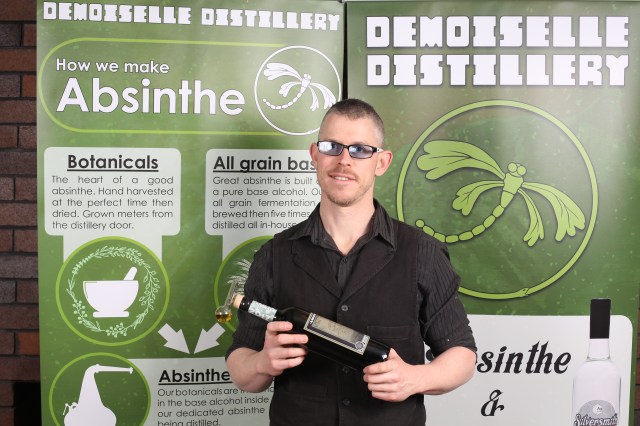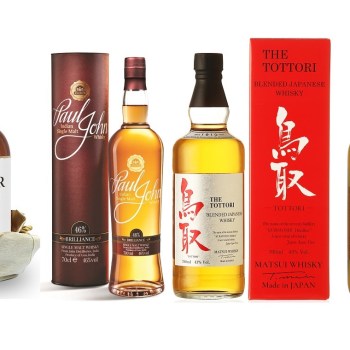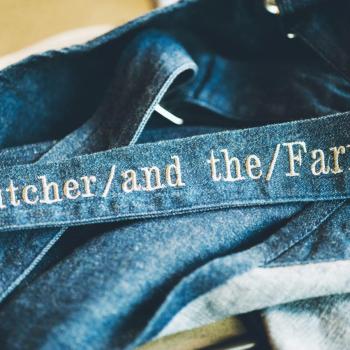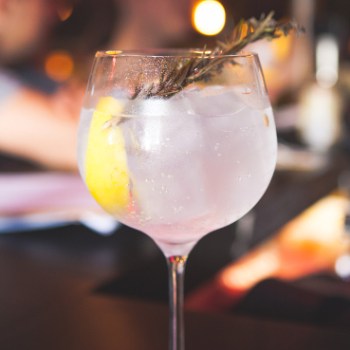Darran Baker is the founder, builder and distiller of Demoiselle Distillery, Australia’s first dedicated absinthe distillery established in 2012. And as we discovered in the November/December issue of BARS&clubs, he’s quite the expert. The following is an excerpt from that feature.
To many, absinthe has reached an almost mythical status; misinformation, based on propaganda from over 100 years ago, has contributed to what has been a chequered history. In fact, it started life as a medicinal tonic before it was a popular spirit.
MESSAGE IN A BOTTLE
The ‘holy trinity’ of herbs: aniseed, fennel and wormwood form the core of quality absinthe. These three herbs are macerated in high proof alcohol before being distilled and then coloured using anywhere from three to more than 10 botanicals in the colouration (while this is called ‘colouration’ it most definitely adds herbal complexity to the spirit as well). Finally the liquid is coarse filtered (to remove most of the plant solids) then bottled at anywhere from 50% to a more traditional 65-74% ABV.
Being part of every step of the process is what I love, and what makes a good absinthe. This ranges from planting the seeds and propagating the wormwood cuttings, fermenting and distilling the base spirit then harvesting and drying the botanicals and ultimately distilling and colouring the finished absinthe. The absinthe becomes a record of that year and one that will last for 100 years plus – as long as the cork stays intact.
There is something poetic about this message in a bottle, from my two hands, that someone can enjoy long after I’m gone. Unlike many popular spirits, where the magic comes from years in a barrel, absinthe’s foundation is the base spirit and quality herbs. Alongside traditional French-style absinthes, I also produce absinthes infused with carefully selected native botanicals including aniseed myrtle, lemon myrtle and Australian mountain pepper.
HALLUCINATIONS
Properly made absinthe does not – and never did – make you hallucinate. First, let’s have a glimpse of absinthe’s tumultuous past. Phylloxera, a small insect and cousin of the aphid is what absinthe has to thank for its heights of fame and eventual infamy. This insect wiped out much of the grape crops in Europe, resulting in extremely limited wine (and wine based spirit) supply. As a result, absinthe became hugely in demand.
Absinthe’s popularity resulted in it ultimately becoming scapegoat for all the alcohol related problems of the day. Just like in the USA, a wave of prohibitionist/temperance support was sweeping through Europe. Enter an odd pair of bed fellows: the prohibitionists and wine producers (who were now back on their feet but with much of their consumer base preferring absinthe), who joined forces to have absinthe ultimately prohibited through much of Europe by 1915.
Absinthe has remained prohibited until 2004 in Europe, and is still banned in certain countries around the world. Absinthe’s ban was and is a farce, and the misinformation that helped have it banned over 100 years ago still repeats itself to this day.
The way forward for absinthe is firstly specialised distilleries continuing to make quality traditional absinthes, and most importantly, educating people how to employ and enjoy this potentially daunting spirit. After running countless absinthe tastings I feel producing absinthe is at least 90% education.
For the rest of the article, sign up to BARS&clubs new digital platform here.



